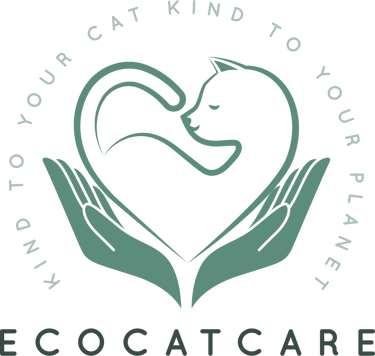Composting Cat Waste: The Ultimate Eco-Hack (Is It Right For You?)
LITTER BOX CHALLENGES & ECO-SOLUTIONS
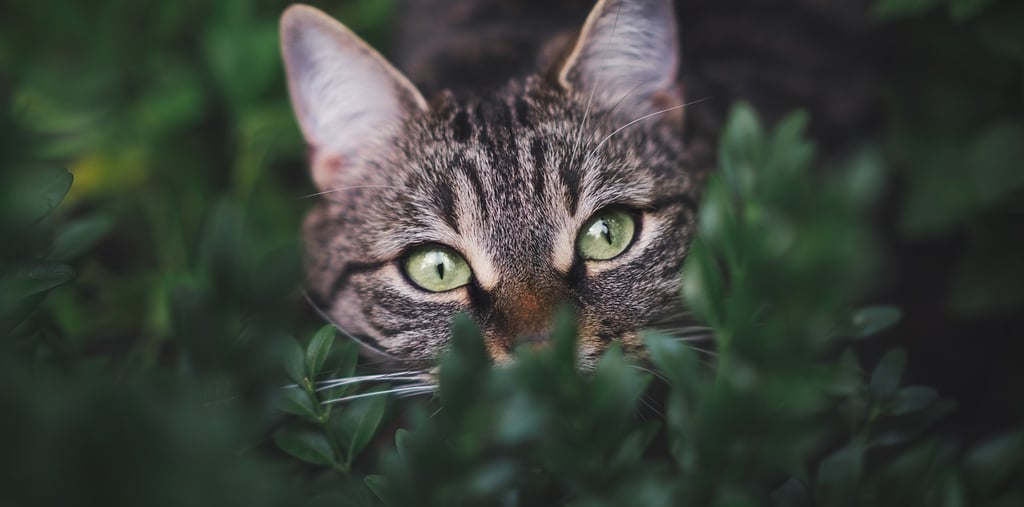

As environmentally conscious cat owners, we are always looking for ways to reduce our pets' pawprint on the planet. From choosing sustainable food sources to opting for eco-friendly toys, every little bit helps. One area that often raises questions is cat litter disposal. With the rise of plant-based litters made from materials like corn, wheat, pine, or paper, the idea of composting cat waste has emerged as a potentially game-changing eco-hack. But is it safe? Is it practical? And most importantly, is it right for you and your feline friend?
This comprehensive guide will delve into the world of composting cat waste, exploring the significant benefits, potential drawbacks, crucial safety precautions, and effective methods to help you decide if this advanced eco-friendly practice aligns with your lifestyle and values.
The Allure of Composting: Why Consider It?
The primary motivation for composting cat waste is, of course, environmental. Conventional clay litters are strip-mined and are not biodegradable, meaning they contribute significantly to landfill volume. Even some biodegradable litters, if sent to landfill, may not break down efficiently due to the anaerobic conditions. Composting offers a way to:
Divert Waste from Landfills: By composting used plant-based litter and cat feces, you can significantly reduce the amount of waste your household sends to the landfill. This is a direct and impactful way to lessen your environmental impact.
Create Nutrient-Rich Soil Amendment: Properly composted cat waste (from healthy cats and plant-based litters) can transform into a valuable soil amendment, often referred to as "black gold." This compost can improve soil structure, aeration, and water retention, benefiting your non-edible ornamental plants, trees, and shrubs. You are essentially closing the loop, returning organic matter to the earth.
Reduce Reliance on Chemical Fertilizers: Using homemade compost can lessen the need for synthetic chemical fertilizers in your garden, which can have their own set of environmental concerns, from manufacturing energy to potential waterway pollution.
Promote a More Sustainable Pet Care Routine: Integrating composting into your cat care routine takes your commitment to eco-friendliness to a new level, fostering a deeper connection with sustainable living practices.
The Caveats and Concerns: What Are the Risks?
While the benefits are compelling, composting cat waste is not without its challenges and potential risks. It's crucial to approach this practice with caution and full awareness.
Pathogen Risk (The Big One!): Cat feces can contain harmful pathogens, with the most significant concern being Toxoplasma gondii. This parasite can cause toxoplasmosis, a disease that can be particularly dangerous for pregnant women, individuals with compromised immune systems, and can also affect other animals and marine life if compost leaches into waterways. Other potential pathogens include roundworms, hookworms, and bacteria like E. coli and Salmonella.
Critical Safety Note: Because of the Toxoplasma gondii risk, compost made from cat waste should NEVER be used on vegetable gardens, fruit trees, or any plants grown for human or animal consumption. It should be strictly limited to ornamental flower beds, shrubs, and trees, and handled with care.
Odor Management: If not managed correctly, a compost pile containing cat waste can become quite odorous, attracting pests and potentially upsetting neighbors. Proper composting techniques are essential to minimize smells.
Composting Time and Temperature: To effectively kill most harmful pathogens (though Toxoplasma gondii oocysts can be very resilient), the compost pile needs to reach and maintain high temperatures (thermophilic composting, typically 140-160°F or 60-70°C) for a sustained period. Achieving these temperatures consistently can be challenging for home composters, especially with smaller piles or in cooler climates.
Litter Compatibility: Only truly biodegradable, plant-based litters are suitable for composting. Clay litters, silica gel litters, or those with chemical additives or deodorizers should never be composted.
Pest Attraction: Besides odors, the organic matter can attract rodents, flies, and other unwanted pests if the compost system is not secure or properly managed.
Local Regulations: Some municipalities may have regulations or restrictions regarding the composting of pet waste. It's always wise to check with your local authorities before starting.
Is Your Cat's Waste a Good Candidate? Health and Diet Matters
Before even considering composting, assess your cat's health and diet:
Healthy Cats Only: Only waste from healthy cats should be considered. If your cat is ill, has intestinal parasites, or is on medication, their waste should not be composted due to the increased risk of spreading disease or contaminating the compost with drug residues.
Diet Considerations: While not a primary factor for pathogen risk, the diet can influence the compost's nutrient balance. However, the main concern remains the pathogens inherent in cat feces regardless of diet.
Safety First: Essential Precautions for Composting Cat Waste
If you decide to proceed, adhering to strict safety guidelines is non-negotiable:
Dedicated Composting System: Use a separate, dedicated composter specifically for cat waste. Do not mix it with your regular kitchen and yard waste compost, especially if that compost is used for edible plants.
Gloves and Handwashing: Always wear waterproof gloves when handling cat litter, feces, or the compost. Wash your hands thoroughly with soap and water immediately afterward, even if you wore gloves.
Mask for Turning: Consider wearing a dust mask when turning or handling the compost to avoid inhaling any airborne particles or potential pathogens.
Location, Location, Location: Site your cat waste composter away from vegetable gardens, children's play areas, wells, and water sources (streams, ponds) to prevent contamination.
No Edibles Rule: Reiterate: NEVER use cat waste compost on food crops. This is the golden rule. Use it only on ornamental plants, mature trees, and shrubs.
Long Composting Time: Allow the cat waste compost to mature for a long period, ideally one to two years, to allow for maximum pathogen degradation. The longer it composts the safer it becomes (though the Toxoplasma risk for edibles remains).
Educate Household Members: Ensure everyone in the household understands the risks and safety precautions, especially children and individuals at higher risk for toxoplasmosis.
Methods for Composting Cat Waste
Several composting methods can be adapted for cat waste, with varying levels of effectiveness and effort:
1. Dedicated Hot Composting Bin/Tumbler
This is generally the recommended method for home composting of cat waste due to its potential to reach higher temperatures.
System: Use a sturdy, enclosed composting bin or a tumbler. Tumblers make turning easier, which is crucial for aeration and consistent heating.
Ingredients (The Carbon/Nitrogen Balance): Cat waste (litter and feces) is nitrogen-rich ("greens"). You'll need to balance this with plenty of carbon-rich materials ("browns") to ensure proper composting and reduce odors. Aim for a carbon-to-nitrogen ratio of roughly 25:1 to 30:1.
Browns: Sawdust (from untreated wood), shredded newspaper or cardboard (no glossy inks), dried leaves, straw, wood chips.
Greens: Cat litter (plant-based) and feces, a small amount of grass clippings (use sparingly as they can mat down).
Process:
Start with a thick layer of browns at the bottom of the composter.
Add scoops of used cat litter. Try to break up any large clumps.
Cover each addition of cat waste completely with a generous layer of browns. This is key for odor control and maintaining the C:N balance.
Keep the compost moist, like a wrung-out sponge. Add water if it's too dry.
Turn the compost regularly (every 1-2 weeks for a tumbler, or as needed for a bin) to aerate it and distribute heat and moisture.
Monitor the temperature if possible with a compost thermometer. Aim for the thermophilic range (140-160°F / 60-70°C).
Continue adding materials until the bin is full, then allow it to cure for at least one year, preferably two, after the last addition.
2. In-Ground Pet Waste Digesters/Disposal Systems
These are commercially available or can be DIY systems that function like mini septic tanks for pet waste.
System: Typically a bucket or container with holes drilled in the sides and the bottom removed, buried in the ground. A lid keeps it secure.
Process:
Dig a hole and bury the container, leaving the top accessible.
Add pet waste and periodically add a septic starter or enzyme treatment designed for pet waste digesters to help break down the material.
The waste slowly decomposes and leaches into the surrounding soil.
Considerations: This method is more about disposal than creating usable compost. Ensure it's located far from water sources and vegetable gardens. It may not reach high temperatures, so pathogen kill is less certain.
3. Trench Composting (Not Ideal for High Pathogen Risk)
While sometimes mentioned, traditional trench composting (burying waste directly in trenches in the garden) is generally not recommended for cat waste due to the high pathogen risk and difficulty in ensuring it's kept away from food crop roots or areas where people might dig.
So, Is Composting Cat Waste Right for You?
Consider these questions:
Are you committed to the safety protocols? This is paramount. If you can't ensure strict adherence to safety, this method isn't for you.
Do you have suitable space for a dedicated system away from sensitive areas?
Are you willing to manage the compost actively (turning, monitoring moisture, C:N balance)?
Do you have a use for compost on ornamental plants only?
Are you comfortable with the extended composting time required?
Does your cat use a 100% plant-based, biodegradable litter with no chemical additives?
If you answered yes to these and are prepared for the responsibility, composting cat waste can be a rewarding step in your eco-friendly journey.
The EcoCatCare Perspective:
At EcoCatCare, we champion sustainable pet parenting. While composting cat waste offers significant environmental benefits, we stress that it must be done with the utmost attention to safety and responsible practices. The health of your family, your pets, and the wider environment is our top priority.
Ready to explore all facets of eco-conscious litter management, from choosing the right biodegradable litter to advanced disposal techniques like composting? Our comprehensive Litter Box Transformation Guide delves into every detail, helping you make informed choices for a greener litter box routine.
(Disclaimer: This blog post is for informational purposes only and is not a substitute for expert advice on composting or waste management. Always prioritize safety and consult local regulations. If in doubt, opt for other eco-friendly disposal methods for used cat litter.)
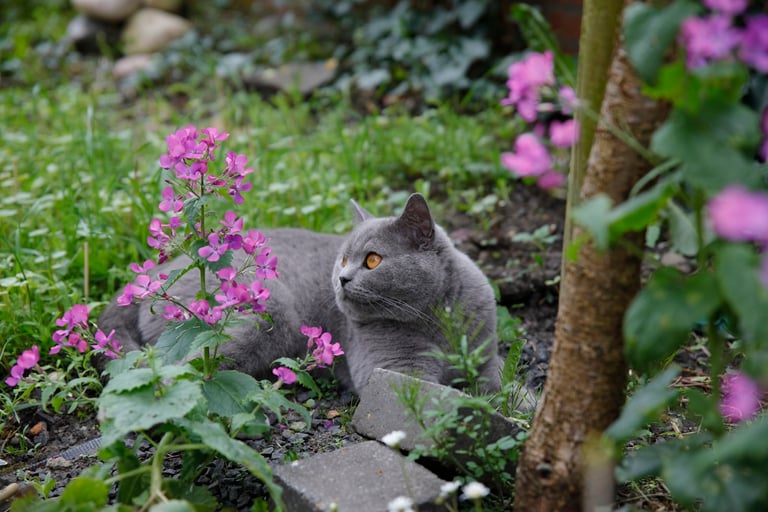


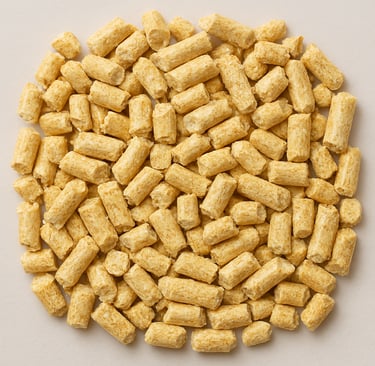
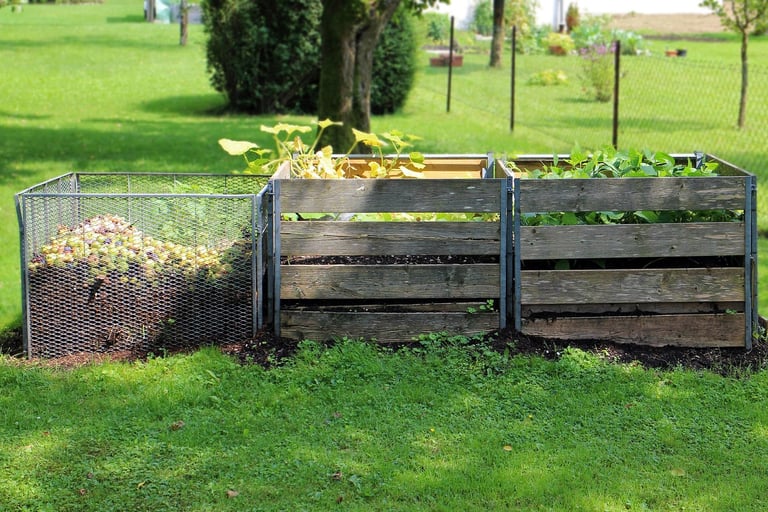

Sustainable Cat Care
At EcoCatCare, we provide resources that help cat parents discover how sustainable choices can create healthier, happier lives for their feline companions while contributing to a healthier planet.
EcoCatCare © 2025. All rights reserved
